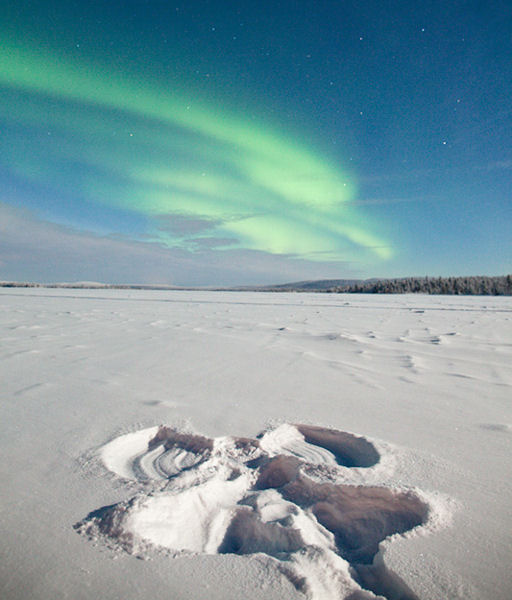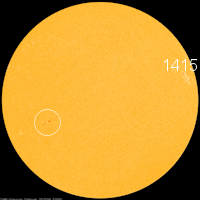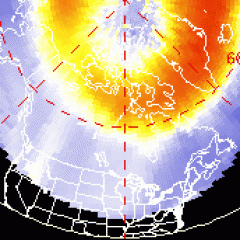THE MOON AND MARS: Mars is approaching Earth for a close encounter in March. Start looking for the Red Planet now: Tonight it is shining brighter than a 1st-magnitude star beside the waning full Moon. The view through a backyard telescope is dynamite: sky map.
AURORA WATCH: A medium-speed solar wind stream is blowing past Earth and sparking auroras around the Arctic Circle. Last night in Muonio, Finnland, tour guide Antti Pietikäinen made a snow angel--then hopped up and took this picture:
"
I took a group 20 km from Hotel Harriniva to find a clear sky," says Pietikäinen. "As soon as we reached a nearby lake, the show was on! Auroras mixed with full moonlight gives some really unique photos."
More lights are in the offing. NOAA forecasters estimate a 40%
chance of polar geomagnetic activity during the next 24 hours as the solar wind continues to blow. Aurora alerts: text, voice.
![]()

![]()
Solar wind
speed: 391.2 km/sec
density: 0.2 protons/cm3
explanation | more data
Updated: Today at 1454 UT
![]()
X-ray Solar Flares
6-hr max: C1 0933 UT Feb09
24-hr: C1 0933 UT Feb09
explanation | more data
Updated: Today at: 1500 UT
![]()
![]()
![]()
Daily Sun: 09 Feb 12
![]()
![]()
A new sunspot is emerging at the circled location. Credit: SDO/HMI
![]()
![]()
![]()
Sunspot number: 28
What is the sunspot number?
Updated 08 Feb 2012
Spotless Days
Current Stretch: 0 days
2012 total: 0 days (0%)
2011 total: 2 days (<1%)
2010 total: 51 days (14%)
2009 total: 260 days (71%)
Since 2004: 821 days
Typical Solar Min: 486 days
Updated 08 Feb 2012
The Radio Sun
10.7 cm flux: 97 sfu
explanation | more data
Updated 08 Feb 2012
![]()
![]()
![]()
Current Auroral Oval:
Switch to: Europe, USA, New Zealand, Antarctica
Credit: NOAA/POES
![]()
![]()
![]()
Planetary K-index
Now: Kp= 1 quiet
24-hr max: Kp= 2 quiet
explanation | more data
![]()
Interplanetary Mag. Field
Btotal: 7.1 nT
Bz: 5.4 nT north
explanation | more data
Updated: Today at 1456 UT
![]()
![]()
![]()
Coronal Holes: 09 Feb 12
![]()
![]()
Solar wind flowing from this coronal hole should reach Earth on Feb. 10-11. Credit: SDO/AIA.





